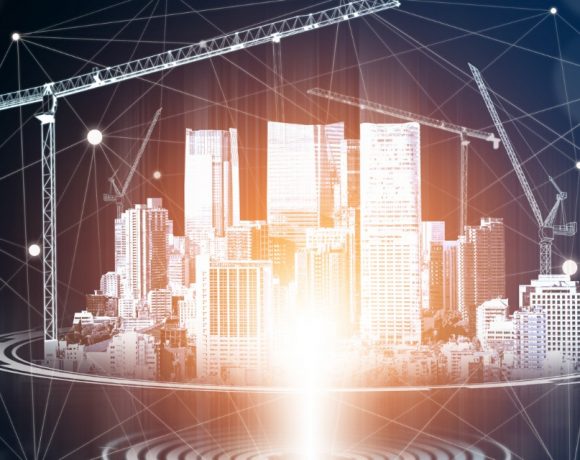- Taiwan’s ambitious Smart City Project aims at solving problems created by the progressive urbanisation of the island by connecting innovative know-hows, bottom-up civic participation and integrating Information and Communications Technologies.
- Air Pollution Emergency Platform, monitoring air pollution across Taipei, relies on Big Data, allowing AI algorithms to learn from previous patterns and improve the quality of further predictions regarding the environment.
- In the future, it is likely that Taiwan will remain at the very top of Smart City projects on a global scale. Ventures like APEP or YouBike are examples of an innovative environment solutions.
Taipei breathes. After years of struggling with air pollution and related diseases, socio-economic and infrastructure problems, the capital city of Taiwan has come a long way. In 2014, Taipei ranked 1,089th out of a ranking of the main 1,600 cities worldwide. This ranking was in terms of air pollution, with levels of PM10 and PM2.5 – both atmospheric measures of aerosols and particles present in the air – more than 25% higher than the acceptable limit set by the WHO. The annual mean in Taiwan is 53, with the WHO limit being 40. It is believed that between 6,000 and 8,000 people die annually from diseases directly or indirectly caused by air pollution in Taiwan. Yet, since 2018, this mean was constantly kept under 35, making Taipei one of the most breathable large cities in Eastern Asia. So what happened? Did the air inexplicably cleaned itself, or is Taipei’s air miracle the result of innovating policies?
Parts of the answer might be found in Taiwan’s ambitious “Smart City Project”, articulated by the Industrial Development Bureau (IDB) of the Ministry of Economic Affairs and supervised by the Taipei Smart City Project Management Office (TPMO). Building on Taiwan’s advantages in technology and human capital, this project aims at solving problems created by the progressive urbanisation of the island by connecting innovative know-hows, bottom-up civic participation and integrating Information and Communications Technologies (ICT). As Dr. Lee, the Director of the TPMO, puts it, “Our core principle is to improve the city and the everyday life of the people. Technology is not a goal in itself. It is only as good as it is useful to all of us.”
A Smart City is a humanist undertaking pointing at ameliorating the everyday life of its citizen, as well as a rationalist project providing a large scale laboratory with opportunities for innovation and the city’s economy. Taiwan’s “Smart City Project” takes the form of Public-Private Partnerships (PPP) initiated by the government but largely implemented by private actors. A key domain where it has been implemented is the Air Pollution Emergency Platform (APEP), aimed at monitoring air pollution across Taipei.
Clean Air, Clear Future
At the heart of the rationale of APEP is the idea that a problem such as air pollution has to be tackled by comprehensive measures. These include diminishing traffic jams, improving the effectiveness and reach of public transportation and giving notice when there is a peak in pollution levels. Combining Artificial Intelligence (AI) machine learning, real-time collecting infrastructure and GPS mapping, APEP represents a great success. The project also relies on Big Data, allowing AI algorithms to learn from previous patterns and improve the quality of further predictions regarding the environment. This combination of tools has enhanced the inspection efficiency of departments of environmental protection by 600% and its AI-generated forecasts have been right 70% of the time. Real-time analysis has been able to deliver air-pollution predictions four hours in advance, giving the local population time to prepare. In addition, data collected by the hundreds of captors disseminated across Taipei are coupled with other environmental factors such as seasonal wind speed, humidity rate and temperature to produce in situ predictions.
Another interesting instance of air pollution monitoring in Taiwan is the Guanyin Industrial Park, where more than a hundred captors were installed. There, a system adopts a visual interface to store evidence, trace back, connect, and track air pollution data. It then uses an automated prediction model based on the AI algorithm to monitor changes in regional air quality 24/7. Local authorities have been able to deliver more than 200 notifications to residents of the area, encouraging them to stay at home when the quality of the air was too depraved. In addition, the air monitoring system has also been used as an enforcement tool to detect illegal emissions from industrial factories and power plants not complying with the environmental regulations. Around $4 million NTD have been recovered from illegal factories, effectively deterring the manufacturers from discharging again and creating a standard for the industry as a whole. Currently, there are at least two other projects of air monitoring system applied to industrial areas in Taiwan, Central Taiwan Science Park and Daija Youth Industrial Park.
APEP is a good example of the collaborative and comprehensive kind of project that Smart City can implement: it includes a variety of actors from the production of data, its transmission and distribution and relies on a bottom-up as much as on a top-down system. One of its strengths is the ability to associate the inputs of the public and private sectors through institutional channels such as TPMO. “We work as a matchmaking platform between the public and private sectors. Thanks to our efforts, the private domain feels comfortable in collaborating with the government agencies.” says Dr. Lee. Smart City Taipei implements the concept of “Smart Grid”, in which individuals are treated as active pieces of the puzzle, capable of participating in creating information and providing guidance on how to adjust the whole structure.
Of course, APEP is only one part of the whole Smart City ecosystem, capable of interacting with other fields and services, such as health, education or the economy. In the real world, it means, that during a peak of air pollution, residents with breathing problems or asthma will receive a notification on their smartphone telling them to avoid frequenting a polluted area – as in the case of Guanyin – or to encourage them not to use their vehicle, in order not to worsen the environmental situation.
Taiwan as the Smart City Eldorado?
Given Taiwan’s combination of a densely urbanised landscape – 79.8% of the island’s 23.6 million inhabitants lived in metropolitan areas in 2019 – and of a cutting edge technological framework, few places would postulate for better positioning for Smart Cities in the world. As a matter of fact, Taiwan is a leading technology manufacturing center, notably in Original Design Manufacturing (ODM). It is one of the largest producers of computers worldwide, with renowned firms like Acer, ASUS, Apple and Gygabyte active on its ground. Furthermore, it hosts Taiwan Semiconductor Manufacturing Company (TSMC), the world’s leading company in chip-making. This quite unique combination of urban density and first-class ICT capabilities have already proved to be an ideal incubator for Smart City ventures, as the case of YouBike – a public-bike service – has shown. As Dr. Lee puts it “What is different in Taiwan is the mindset. We are able to bridge a mature ITC infrastructure with innovative ideas.”
In the future, it is likely that Taiwan will remain at the very top of Smart City projects on a global scale. Ventures like APEP or YouBike are examples of an innovative dynamic attracting Foreign Direct Investment (FDI) that will certainly increase as technologies and society evolve simultaneously. Taiwan is the sixth destination in Eastern Asia, just behind way larger competitors such as China, Thailand and India for FDI. Importantly, Taiwan’s image as a first-tier actor in Smart City has been acknowledged internationally: Taoyuan was ranked first in the 2019 Intelligent Community of the year index, Keelung City won the 2019 Asian-Oceanian Computing Industry Organisation (ASOCIO), while Taipei ranked eight worldwide and second in Asia in the Smart City Index 2020.
Taiwan’s Smart Cities represent an innovative mode of urban development based on a multidimensional integration of technology, public infrastructure, data and human resources. It aims at improving the general well-being as well as the efficiency of the urban ecosystem. It is true that challenges related to data privacy, data management and the integrity of the whole system exist and will not evaporate in the future. How Taiwan will handle them will tell a lot about its standing in the realm of Smart City and more generally, its resilience with regards to technological developments. But here optimism is allowed because a keystone of Taiwan’s experience has been, not to focus on what it cannot control, but rather on concentrating its energy towards what it can create.






NO COMMENT